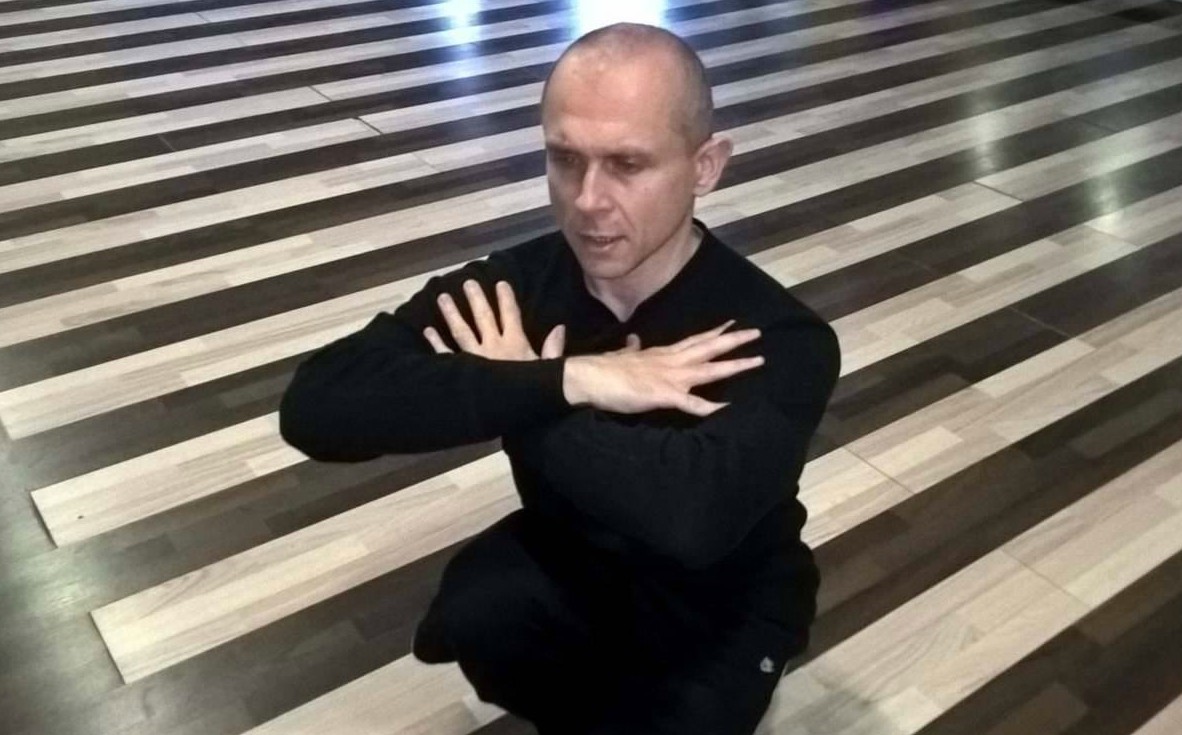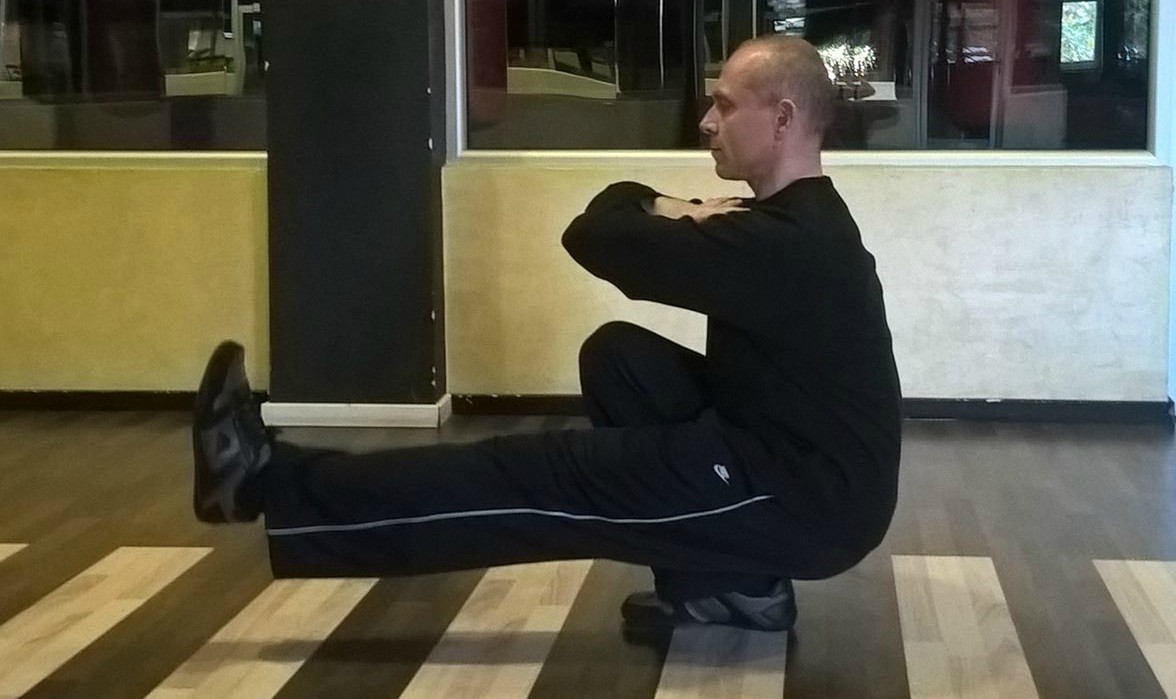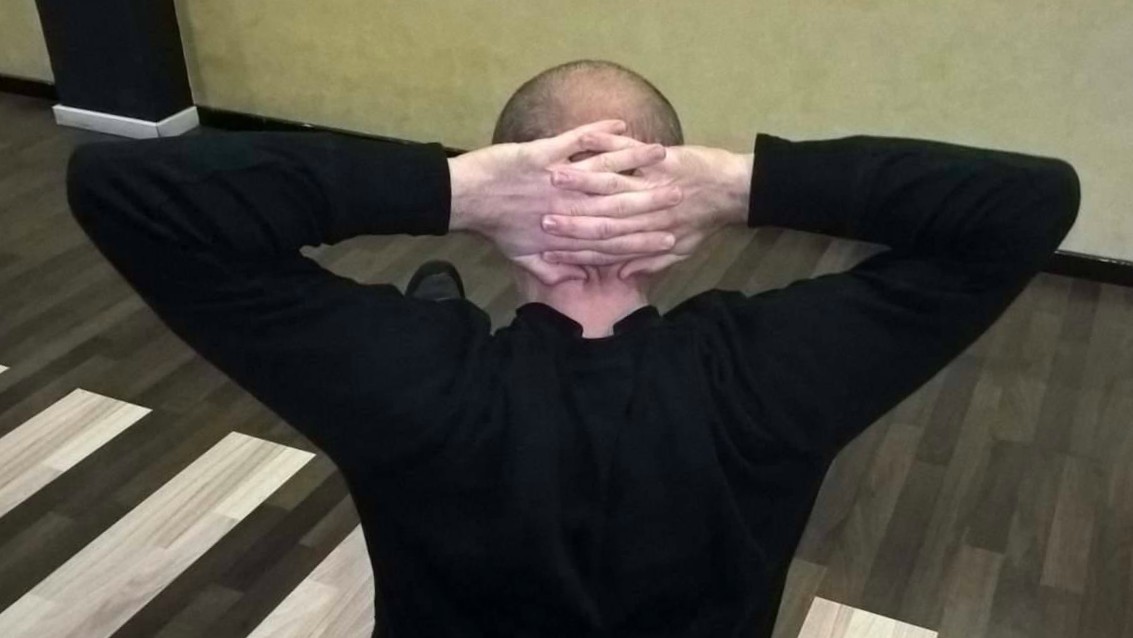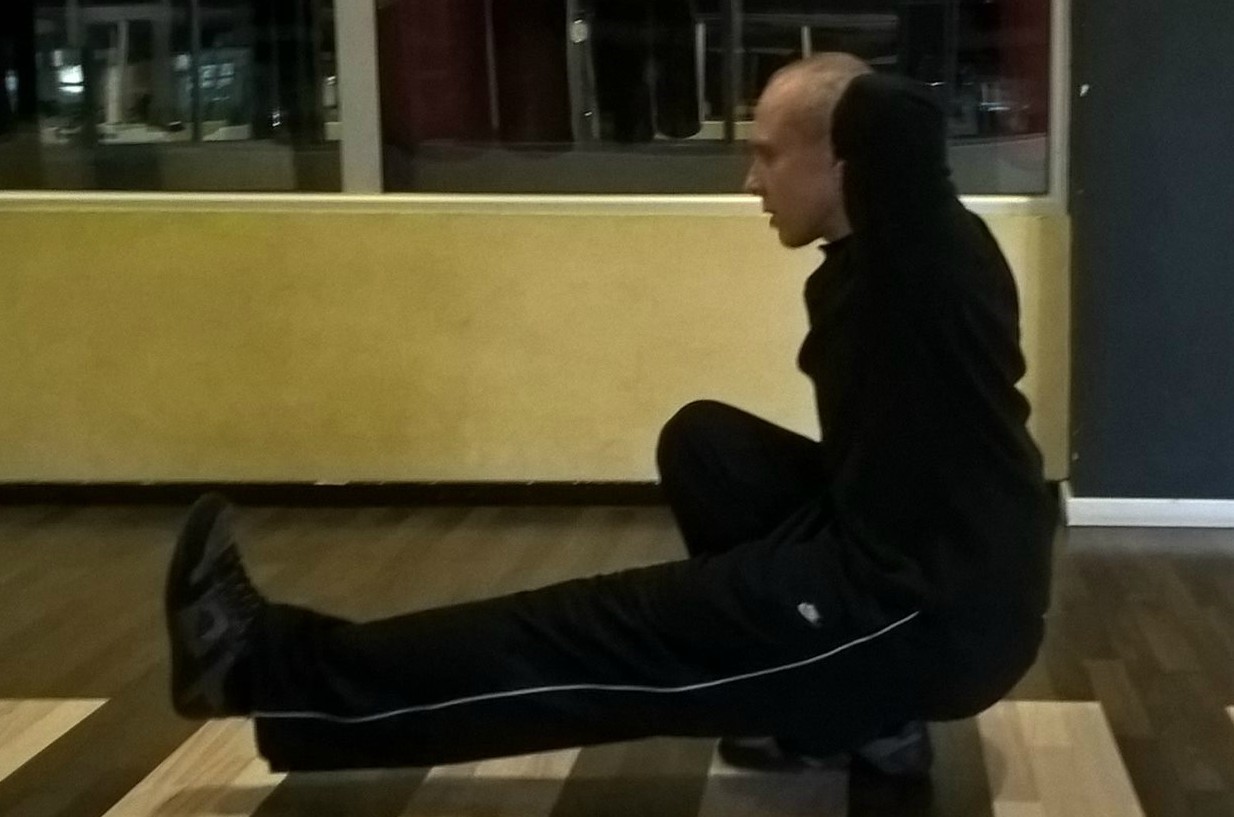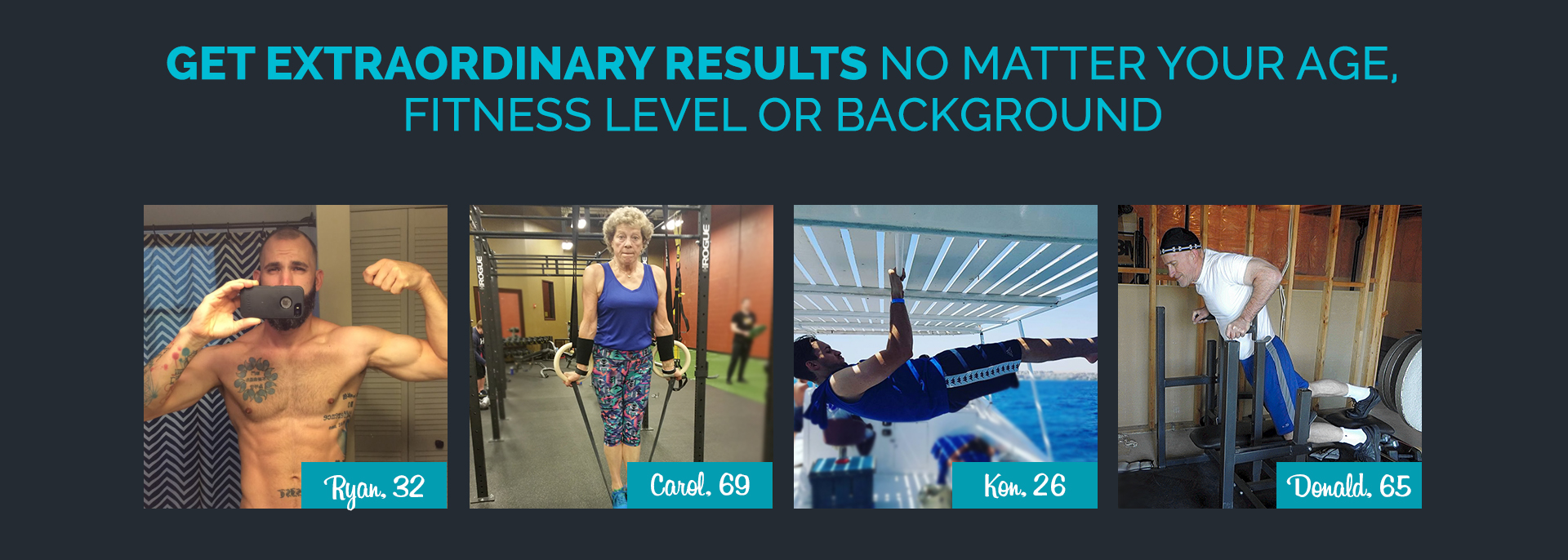Join the tribe of Movement & Calisthenics Athlete – People just like you that are working with their own body weight to get strength, lose fat build muscle, recover from injuries and live their best lives!
While pistol squat performed in sets of 10+ repetitions is an impressive achievement in its own right, it is far from limits of what can be achieved with one-legged squats.
In my leg training, I’m using nine different variations of one-legged squats, each one more progressive than previous. These variations not only make training more fun and interesting but, as the movements become more complex, they require control and development of ever more muscle segments and groups.
Steps For Your Pistol Squat Variations
1. SHORT BARREL PISTOL
The first step towards advanced one-legged squats is simply bringing hands closer to the body. The easiest way to do this is by bending your arms, crossing them in front of you and touching your shoulders with fingers of the opposite hands. Because the arms are bent, I call this version the short-barrel pistols.
Though this adjustment is almost insignificant you will, as you start performing your one-legged squat this way, immediately feel new kinds of forces challenging you. First thing that you’ll notice is the need to bend to the front, due to the new, added challenge to your core. The way to fight and eventually overcome this need is to additionally tighten your core muscles – the degree of contraction required for basic pistol squats will no longer be enough.
In order to extract the maximum of this movement adjustment, strive to focus on few key things:
– Keep your chest high – that will automatically bring your shoulders back and your spine straight.
– Try to keep your upper arms parallel to the floor. Actively strive to keep your elbows from falling below parallel. Keeping your arm muscles (and especially triceps) tight, will be of great help.
As I’ve already said, the need for embracing your core muscles wil be greater here than with pistols. The key muscles here are side abdominals and spinal erectors. I have found that contracting the upper back and rear delts adds stability to your posture.
The rest of the important things (looking slightly down, keeping legs close together, actively pressing the ground through the foot of the working leg, breathing pattern, etc.) are already covered in previous article about basic pistol squats.
Do not feel discouraged by the fact that you are unable to do as many of these squats .as you do pistols. Be patient and work diligently. Focus on quality repetitions – if that means just two or three before you start bending over and losing control, so be it. Don’t exhaust yourself, but enjoy the process of mastering this new movement. Work slowly towards more and more reps.
Than, when you are able to perform more than, say, ten reps with full control, you may move to the next step
2. PRISONER ONE-LEGGED SQUATS
While the previous version was, in comparison to pistol squat, slightly more challenging, the prisoner one-legged squat is a lot more serious movement that will noticeably raise the degree of difficulty.
To perform a prisoner one-legged squat you need to, as in the basic prisoner squat, descend with your hands clasped behind the back of your head – but while squatting on only one leg.
This movement will, because your hands and elbows are now behind your head, be a lot more challenging to master and perform fluidly. Because of the lack of balance offered by arms extended in front of you, you will need to engage your core, back, shoulder and arm muscles a lot more than in the previous steps. All this means that your concentration and focus will need to strengthen accordingly which, of course, is a great thing.
To perform the prisoner one-legged squat, stand with your hands on the back of your head, with your fingers interlocked. Before your first repetition, make sure that:
– Your forearms are thoroughly squeezed, and your fingers tightly interlocked.
– The muscles of your upper arms are tight, as well as your whole shoulder girdle, especially rear deltoid and trapezius muscles.
– The whole upper back, including lats, is squeezed and completely under control, and core muscles – front and (especially) side abdominals and lower back muscles – are fully engaged.
Although this seems like a lot of things to focus on, in time you’ll be able to almost instantly reach that state. Don’t be dispirited if you cannot reach it immediately – work patiently and with awareness, and step by step you’ll get there, all the while adding repetitions to your sets.
As you start to descend under full control, apply all the steps you already new from earlier forms of one-legged squats, with few additional points:
While descending on your working leg, don’t allow your shoulders to roll forward and your elbows to move to the front of the plane that goes vertically sideways through the middle of your ears. Your body instinctively tries to get into an easier position by rolling the shoulders – don’t allow it to succeed. Actively maintain tight squeeze in your arms, shoulders and upper back. Workout by workout, week by week, you’ll gain control and add rep by rep. Don’t be fooled into a blind rep game – look for quality and the feeling of full muscle engagement.
Make sure to lower all the way down to the deepest position. Start your descending from the hip and move back, while simultaneously lowering yourself down. Descend in a slow, controlled fashion, and make sure to stop for a moment at the bottom point. While there, and still tight, asses your position in space – try to gather all the spatial information and feedback possible. Then, thinking about pushing the ground away from you, start moving up. In time you’ll be able to completely feel the engaged chain of muscles, starting from glutes, through hamstrings, to thighs.
If your leg workouts were until now entirely based on pistol squats, now you have more options. If still unable to do many reps of these new versions of one-legged squats, I advise that, after warming up with a set or two of about ten slow narrow two-legged squats, you do acclimatization set of only 3 pistol squats on each leg. Then, do 2-3 sets of one of these more difficult versions. If you can only do a couple of correct reps, do 3 sets of 2, then, in time, 2 sets of 3, 2 sets of four, etc.
In the beginning, while still learning to do the movement properly, do not exhaust yourself. Do your sets of slow reps and then finish your leg training with few sets of classic pistol squats in more repetitions.
In the next article, we’ll continue our progress toward more engaging versions of one-legged squats. Until then, feel free to ask questions and offer your suggestions and, as they say, always keep your squats low and your standards high.
READY TO GET ON THE JOURNEY OF A LIFETIME?
See what our users are saying:
“Would you rather have the ability to boast of bench pressing 300 pounds or to do a one-arm pull-up? To me, pulling my entire body up with one arm is much more impressive. – Michael – Movement Athlete Academy User”
“Movement Athlete Academy is not the kind of program that demands you to be this physically fit to be able to perform. Instead, it caters to your own strengths and capabilities and keeps track of your progress.”
“Stick with it! It is hard at first, especially if you are stuck on a lower-level, high rep exercise. But persevering is worth it! Finally reaching each goal is so exciting.”

